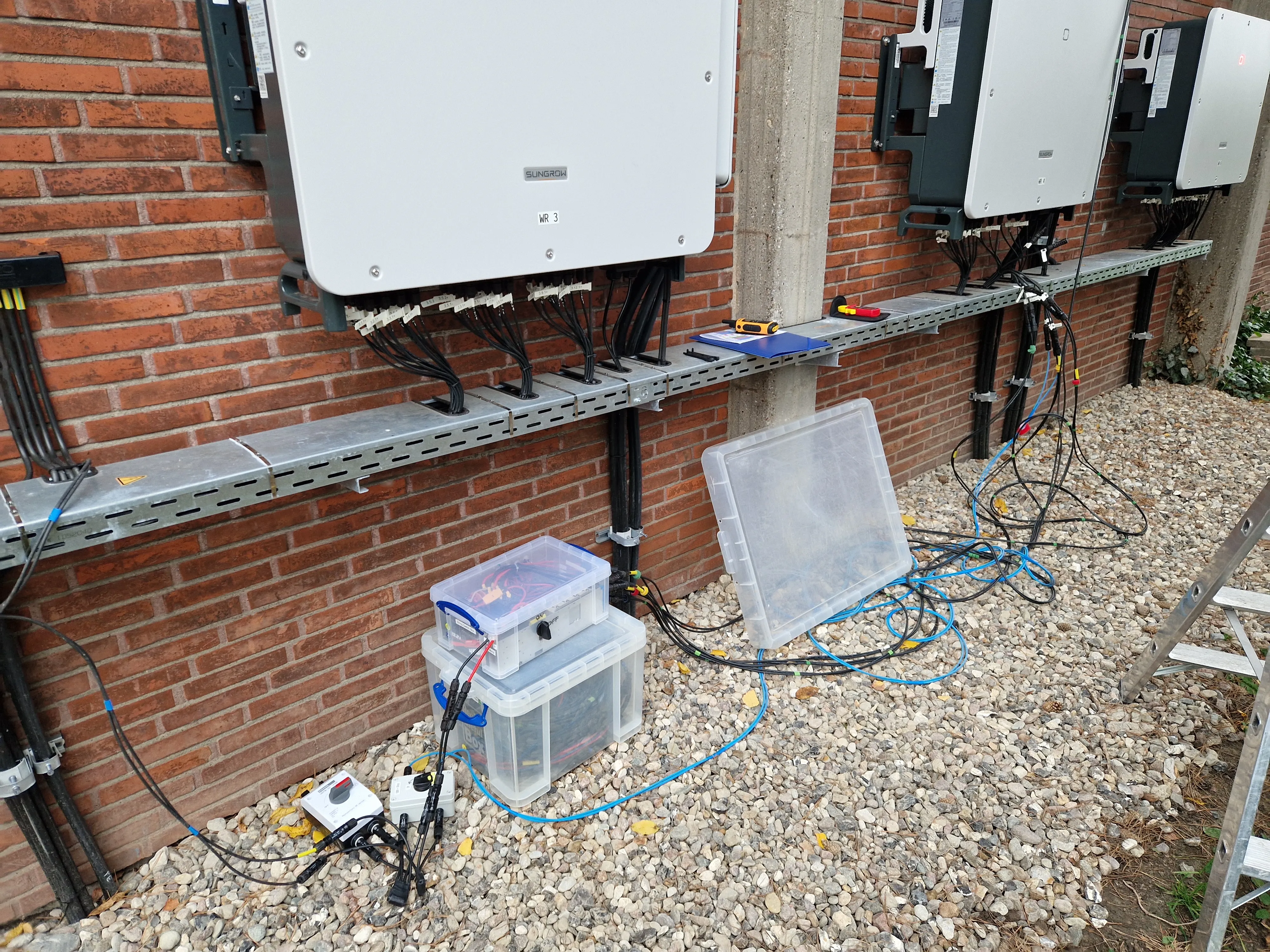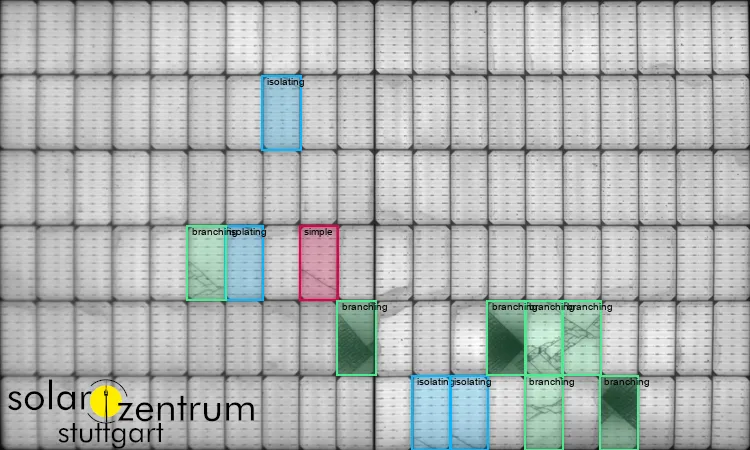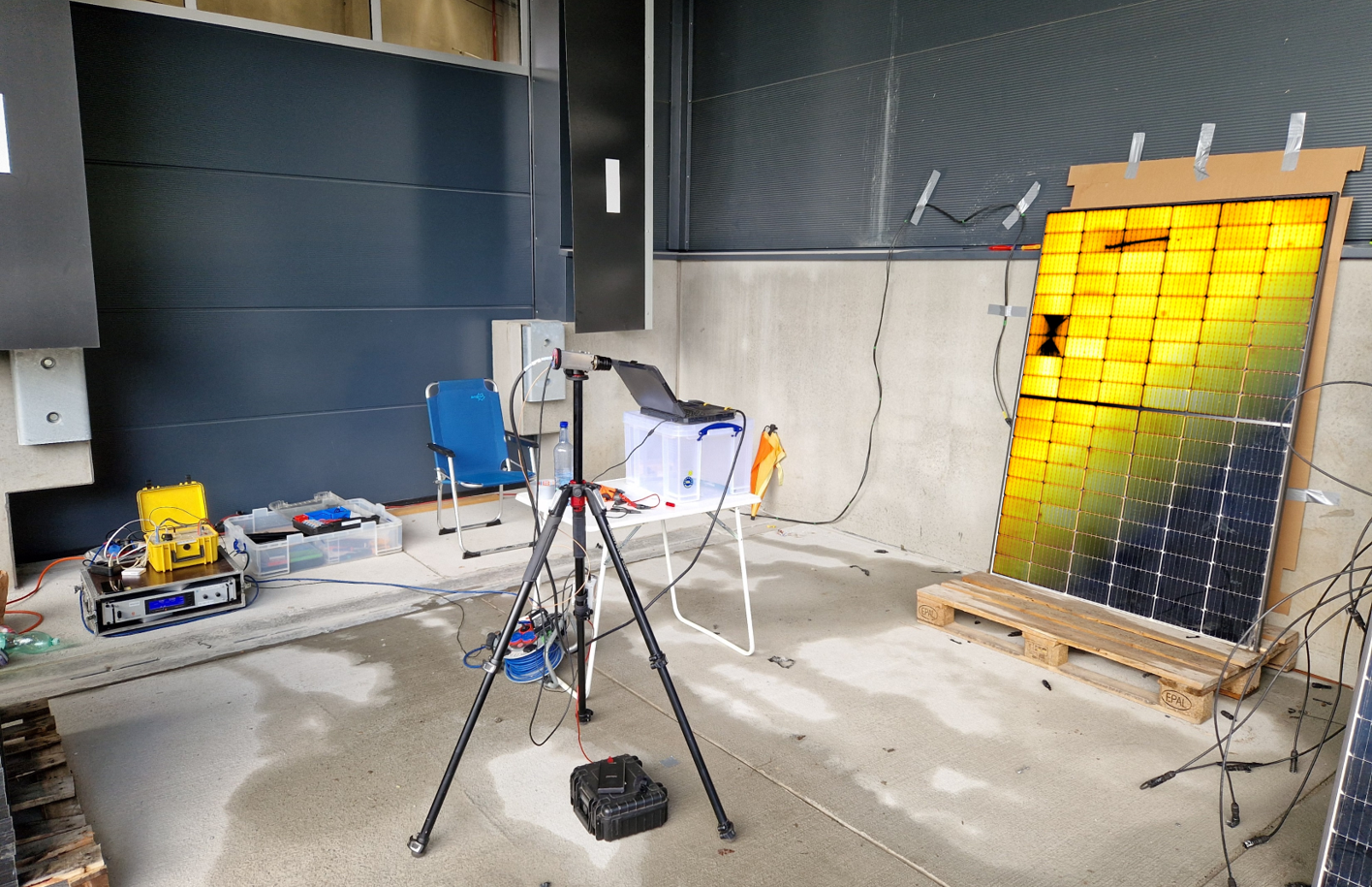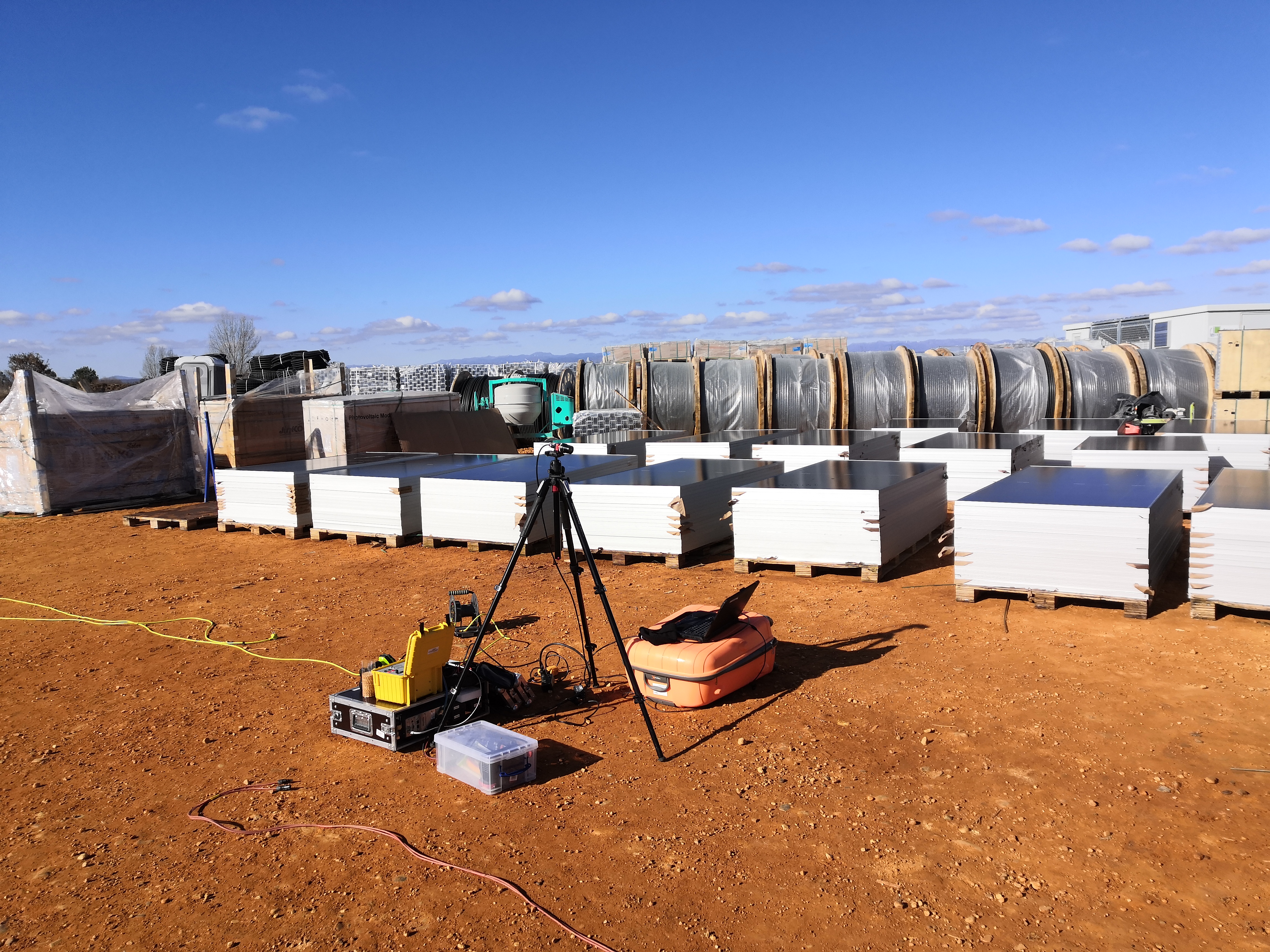· JS · English · 2 min read
EL-Inspection in northern Germany
The Solarzentrum Stuttgart inspects a 1 MWp rooftop system in northern Germany.

Electroluminescence inspection of 2600 modules in northern Germany
In the fourth quarter of the year, Solarzentrum Stuttgart carried out a comprehensive inspection of over 2,600 modules on a rooftop system in northern Germany. Within a few days, Dr. L. Stoicescu and J. Schramm carried out the EL (electroluminescence) measurement on a megawatt peak system - a demanding task that required precision, expertise and speed.
Piece work
The EL measurement is carried out in a clearly structured workflow in which every detail counts. A specialist operates the special camera, which is mounted on a tripod. The specialist ensures that all parameters are correct in order to guarantee high-quality images of the modules. After a coordinated number of automated image processing steps, they move on to the next module. At the same time, the second person at the inverter ensures that the correct string is always supplied with power. A specially developed switch box speeds up the process by enabling the strings to be switched and disconnected quickly. Depending on the string plan and accessibility of the modules, the strings had to be switched every two minutes. Despite unexpected breaks in the rain, the team managed to measure all 2600 modules and collect the data within a few days.

Evaluation at Solarzentrum Stuttgart
Back at the ‘Solarzentrum Stuttgart’, the collected images were analyzed in detail. First, the EL images were aligned so that only the module and the individual cells were visible in the images. Care was taken to correctly take into account the lens curvature of the camera lens. All damaged cells were then identified and each defect was assigned to a corresponding defect category. After a further correction run, the quantitative evaluation was carried out in order to obtain detailed information about the defects in the entire system. This evaluation makes it possible to make well-founded assumptions about possible issues with the assembly or manufacture of the PV modules.

Finally, the Solar Center produced a detailed report that provides the customer with a precise status report of the system.
The project in northern Germany shows once again how important precise measurements and careful evaluation are in order to reduce the susceptibility of solar installations to faults and ensure their performance over their entire service life.




